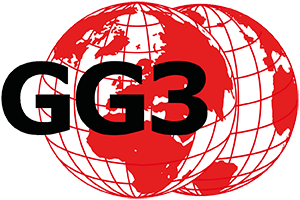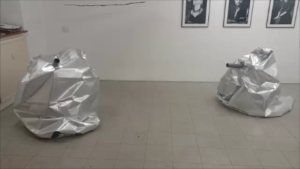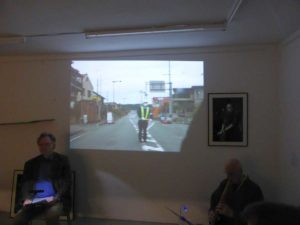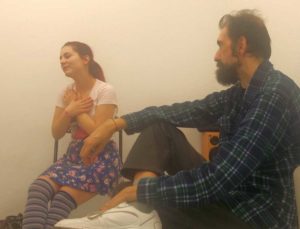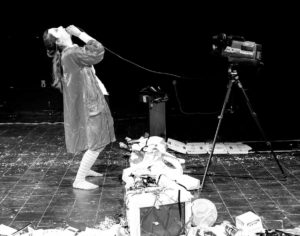Traffic noise is omnipresent. At home the TV, hi-fi plays, on the go the radio, smartphone, mp3 player, commercial noises in the supermarket. Advertising moves into the picture visually and acoustically. Some can’t stand being without noise anymore. Noise is stressful and makes you sick. Silence would mean feeling, enduring, resting, recovering, enjoying, healing. A free enrichment. An exhibition with a critical view from a sustainable perspective.

Historical car graveyard in Kaufdorf, Switzerland. Photo: Norbert Aepli. Own work (Creative Commons CC-BY-3.0)
17 artists show objects, photos, paintings, graphics, videos, sound and performances related to STILLE
Sandra Araújo , Gudrun Arndt , Yegor Astapchenko , Federico Federici , Francesca Fini , Anne Glassner, Michael Hess, Stephanie Hough, Geeske Janßen , Anneke Kleimann , Maria Korporal , research group art , PRZEPRASZAM, Korvin Reich , Dina Shenhav , Svoradov Theatre , Sarah Wölker
documentation (partly)
program
Exhibition – Conversations
01/13/2017 – 03/10/2017, Fridays 5-8 p.m
vernissage : Mrs. 13.01.17, 7 p.m., Whathappensnext Ensemble Berlin, Metastylistic ad hoc chamber music
Connie Voss and Gudrun Doberenz, voice, Max Stehle saxophone,
Hartmut Arweiler, guitar, Reinhard Gagel accordion and conductor
The video of Maria Korporal’s vernissage: https://www.facebook.com/GroupGlobal3000/videos/1266844956727769/
Photos of the vernissage by Gudrun Arndt: http://www.aquilalux.com/Showcase/Global-Group-3000/
Artist talk, artists of the exhibition talk about their works: Mrs. 01/27/2017, 7 p.m
Performance – PRZEPRASZAM Fr. February 3, 7 p.m.: Survival exercises in information smog.
PRZEPRASZAM, a team of art activists at levels of creative exploration, performance, sound installations, video art, social projects , animation of culture, music and painting.
Founded in early 2015 in Łódź, Poland by Ola Kozioł and Suavas Lewy.
“When you turn up the music, you start talking out loud. If you’re in a busy urban area, you must one use stronger sound intensity to enable communication. We start screaming and the chaos increases. In addition, we are attacked from everywhere, from the press, television, internet, suffocating in the “smog” of meaningless content. Submitting to this trend intensifies the problem and increases the chaos.”
“In our work we propose an alternative approach to solve the problem. Conversely, when we think in a utopian way, when we all start to transform, chaos begins itself to weaken. The chaos has to break away in order to be able to hear our sounds, our message. Chaos learns to hear. And then we have the chance to learn and to hear too. We hear each other. This may prove to be the best weapon in the fight against “occupier’s smog” prove , the ser blurs, trivializes and waters down the core of coexistence. Through the repeatability of the activity we want to bring the state of meditation close to uns to bring the essence and value of the message. It’s time to focus on what we hear within, who we are, what we have to convey and how we live in the ‘smog’ Finding resonance with the environment.”
reading “Silence in Fukushima” by Johannes Balve with author’s photos from the restricted zone; Zen music played by Peter Pütz (Japanese flute: shakuhachi): Mrs. 02/17/17, 7 p.m
Exhibition :
The artist Anneke Kleimann is present Fr. February 24th, 5-8 p.m
The artist Gudrun Arndt is present Fr. 3.3., 5-8 p.m
Finissage – performance of the Svoradov Theater: Mrs. 3/10/17, 7 p.m.: Silencio (aka BREATH)
SVORADOV THEATER
Svoradov Theater was located in Svoradov st. i n Bratislava by the Greek director Triantafyllos Bostantzis .
Silencio (aka BREATH) is a work inspired by Samuel Beckett’s minimal 25 second timed game Breath becomes. The breath is lost in the haze of the garbage. All human life is just a breath between two screamsn in the trash. Other influences, besides Beckett, are David Lynch’s Mullholland Drive sequence at the club “Silencio” and Theodor Adorno’s philosophical book Negative Dialektik. Lynch shows a world where everything is “just a tape” and Adorno thinks that after Auschwitz “all culture is rubbish”. Our performance touches the narrative of Auschwitz, where millions of breaths died, and then it was silent. As Adorno says, “that Auschwitz happened despite all traditions of philosophy, art and science show that culture, civilization, spirit cannot move and change people”.
